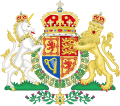Name Year Notes Ref. Henry Stafford, 2nd Duke of Buckingham 1478 Trial of George, Duke of Clarence (brother of Edward IV , whose ward Stafford was) John de Vere, 13th Earl of Oxford 1499 Trial of Edward Plantagenet, 17th Earl of Warwick (the last male-line Yorkist ) Thomas Howard, 2nd Duke of Norfolk 1503 Trial of Edward Sutton, 2nd Baron Dudley [ citation needed ] Thomas Howard, 2nd Duke of Norfolk 1521 Trial of Edward Stafford, 3rd Duke of Buckingham [ citation needed ] Thomas Howard, 3rd Duke of Norfolk 1534 Trial of William Dacre, 3rd Baron Dacre [ citation needed ] 1536 Trial of Anne Boleyn (Howard's niece) [ citation needed ] Henry Courtenay, 1st Marquess of Exeter 1537 Trial of Thomas Darcy, 1st Baron Darcy de Darcy (Courtenay was a first-cousin to Henry VIII) Thomas Audley, 1st Baron Audley of Walden 1538 Trial of Henry Pole, 1st Baron Montagu and Henry Courtenay, 1st Marquess of Exeter (cousins; scions of the House of York ) 1541 Trial of Thomas Fiennes, 9th Baron Dacre William Paulet, 1st Marquess of Winchester 1551 Trial of Edward Seymour, 1st Duke of Somerset (fallen Lord Protector, regent and uncle of Edward VI; Paulet was one of the 16 executors) [ 18] Thomas Howard, 3rd Duke of Norfolk 1553 Trial of John Dudley, 1st Duke of Northumberland (fallen regent) [ citation needed ] Henry FitzAlan, 19th Earl of Arundel 1557 Trial of Lord Stourton (FitzAlan was a godson of Henry VIII; Stourton a nephew of Dudley) William Parr, 1st Marquess of Northampton 1559 Trial of Thomas Wentworth, 2nd Baron Wentworth (Parr was brother to the late queen Catherine ; Wentworth a cousin of Seymour) George Talbot, 6th Earl of Shrewsbury 1571 Trial of Thomas Howard, 4th Duke of Norfolk William Paulet, 3rd Marquess of Winchester 1587 Funeral of Mary, Queen of Scots (Paulet was a judge at her trial) [ citation needed ] Henry Stanley, 4th Earl of Derby 1589 Trial of Philip Howard, 20th Earl of Arundel Thomas Sackville, 1st Baron Buckhurst 1601 Trial of Robert Devereux, 2nd Earl of Essex (a favourite of Elizabeth I ) Thomas Coventry, 1st Baron Coventry 1631 Trial of Mervyn Tuchet, 2nd Earl of Castlehaven (Coventry was Lord Keeper) [ citation needed ] Thomas Howard, 21st Earl of Arundel 1641 Trial of Thomas Wentworth, 1st Earl of Strafford (Howard was the Earl Marshal; Wentworth the former Deputy of Ireland) Edward Hyde, 1st Earl of Clarendon (Lord Chancellor ) 1666 Trial of Thomas Park, 15th Baron Morley (Hyde was a member of Charles' exile court) Heneage Finch, 1st Baron Finch (Lord Chancellor) 1676 Trial of Charles Cornwallis, 3rd Baron Cornwallis Trial of Philip Herbert, 7th Earl of Pembroke 1679 Trial of Thomas Osborne, 1st Earl of Danby (later 1st Duke of Leeds) 1679 Trial of William Herbert, 1st Earl of Powis ; William Howard, 1st Viscount Stafford ; Henry Arundell, 3rd Baron Arundell of Wardour ; William Petre, 4th Baron Petre ; and John Belasyse, 1st Baron Belasyse 1680 Trial of William Howard, 1st Viscount Stafford , George Jeffreys, 1st Baron Jeffreys (Lord Chancellor) 1686 Trial of Henry Booth, 2nd Baron Delamere Thomas Osborne, 1st Marquess of Carmarthen (later 1st Duke of Leeds)(Lord President of the Council ) 1693 Trial of Charles Mohun, 4th Baron Mohun John Somers, 1st Baron Somers (Lord Chancellor) 1699 Trial of Edward Rich, 6th Earl of Warwick ; and of Charles Mohun, 4th Baron Mohun William Cowper, 1st Baron Cowper (Lord Chancellor) 1716 Trial of James Radclyffe, 3rd Earl of Derwentwater ; William Widdrington, 4th Baron Widdrington ; William Maxwell, 5th Earl of Nithsdale ; Robert Dalzell, 5th Earl of Carnwath ; William Gordon, 6th Viscount of Kenmure ; and William Murray, 2nd Lord Nairne 1716 Trial of George Seton, 5th Earl of Winton 1717 Trial of Robert Harley, 1st Earl of Oxford and Earl Mortimer Peter King, 1st Baron King (Lord Chancellor) 1725 Trial of Thomas Parker, 1st Earl of Macclesfield Philip Yorke, 1st Earl of Hardwicke (Lord Chancellor) 1746 Trial of William Boyd, 4th Earl of Kilmarnock ; George Mackenzie, 3rd Earl of Cromartie ; and Arthur Elphinstone, 6th Lord Balmerino 1747 Trial of Simon Fraser, 11th Lord Lovat Robert Henley, 1st Baron Henley (Lord Keeper) 1760 Trial of Laurence Shirley, 4th Earl Ferrers Robert Henley, 1st Earl of Northington (Lord Chancellor) 1765 Trial of William Byron, 5th Baron Byron Henry Bathurst, 2nd Earl Bathurst (Lord Chancellor) 1776 Trial of Elizabeth Pierrepont, Duchess of Kingston-upon-Hull Edward Thurlow, 1st Baron Thurlow (Lord Chancellor; until 1793) 1788–1795 Trial of Warren Hastings Alexander Wedderburn, 1st Baron Loughborough (Lord Chancellor; from 1793) Thomas Erskine, 1st Baron Erskine (Lord Chancellor) 1806 Trial of Henry Dundas, 1st Viscount Melville Thomas Denman, 1st Baron Denman (Lord Chief Justice of the Queen's Bench ) 1841 Trial of James Brudenell, 7th Earl of Cardigan Hardinge Giffard, 1st Earl of Halsbury (Lord Chancellor) 1901 Trial of Frank Russell, 2nd Earl Russell John Lambton, 3rd Earl of Durham 1911–1912 Lord High Steward to George V during his visit to India from 1911 to 1912 [ 19] Douglas Hogg, 1st Viscount Hailsham (Lord Chancellor) 1935 Trial of Edward Russell, 26th Baron de Clifford (last trial of a peer in the House of Lords ) 

